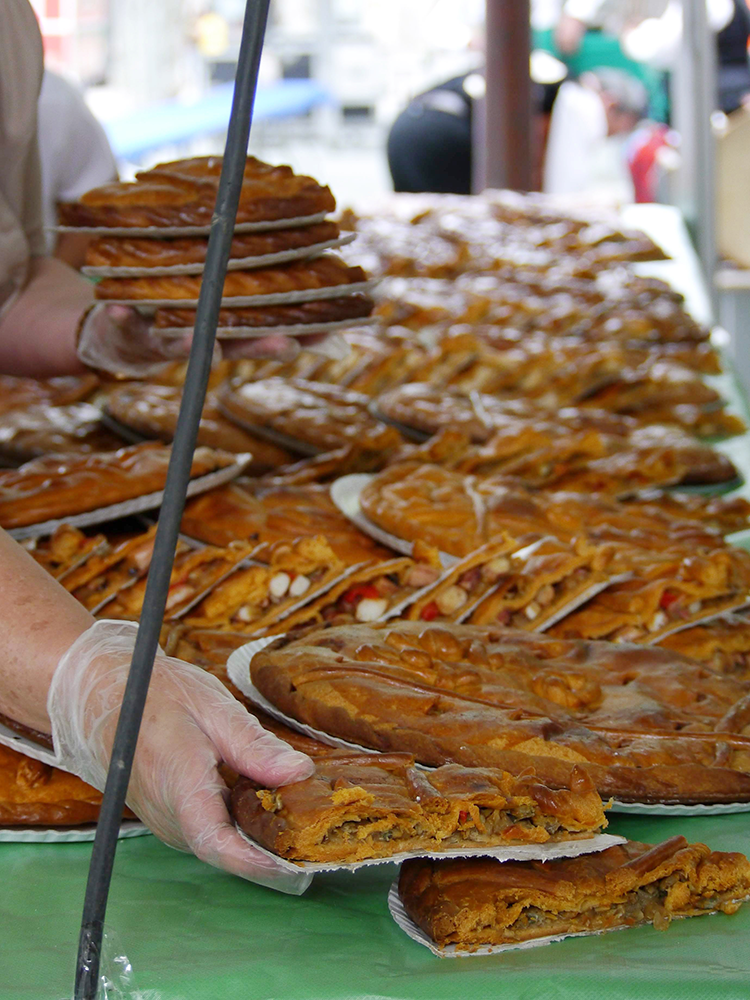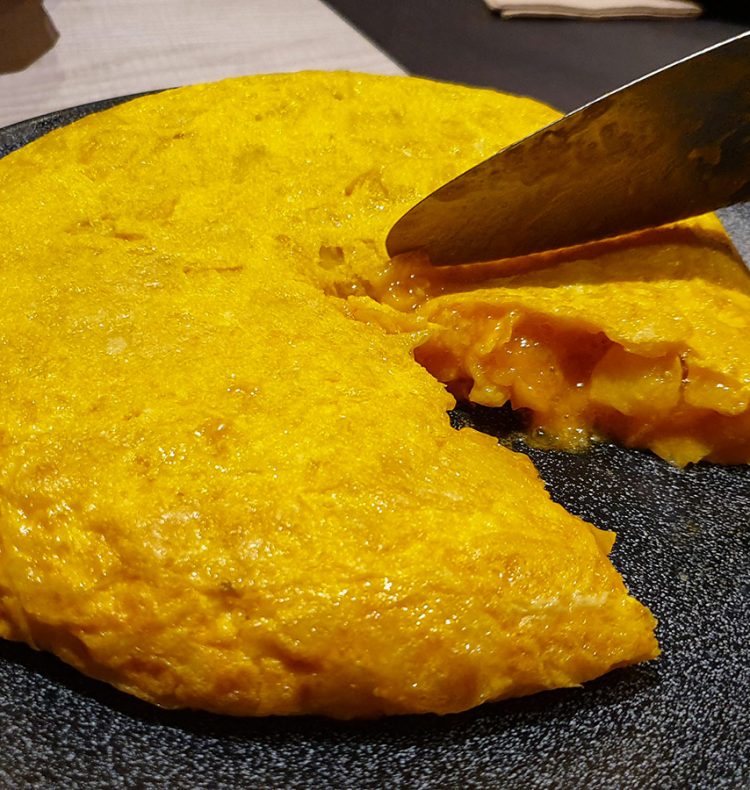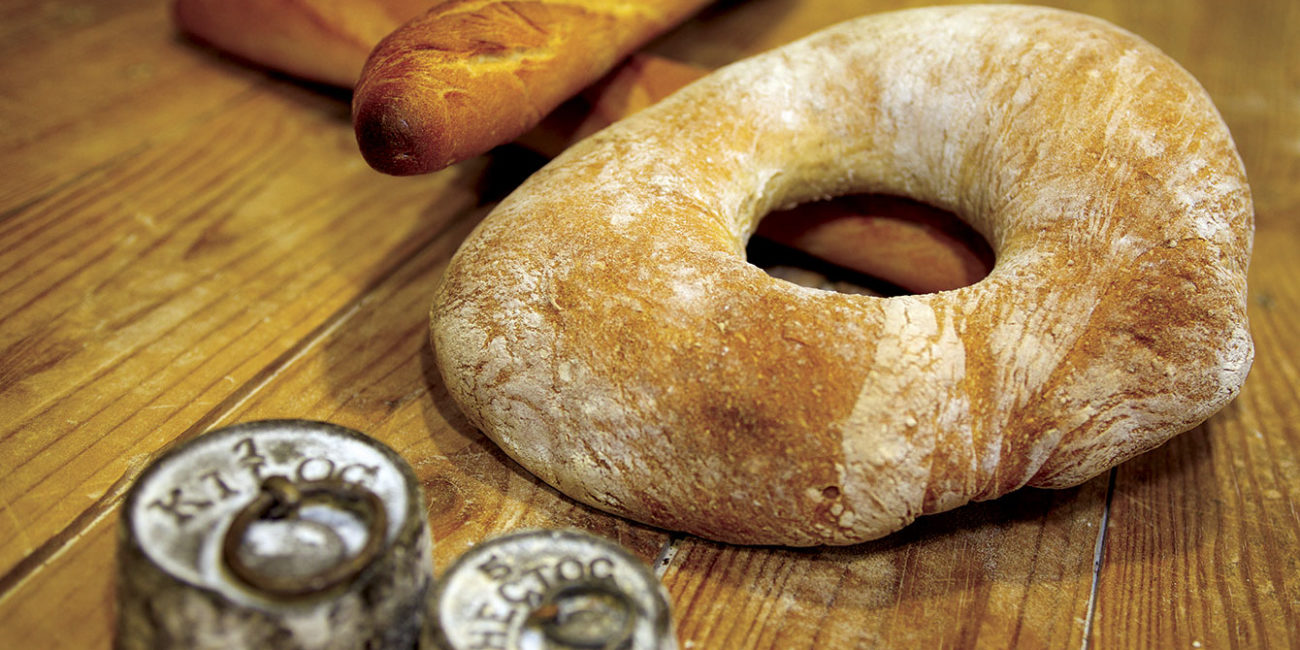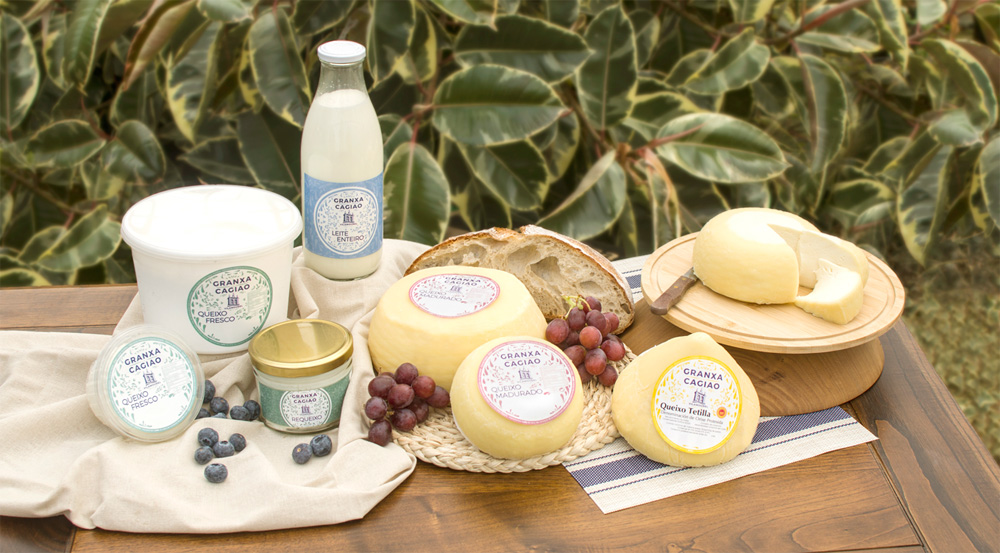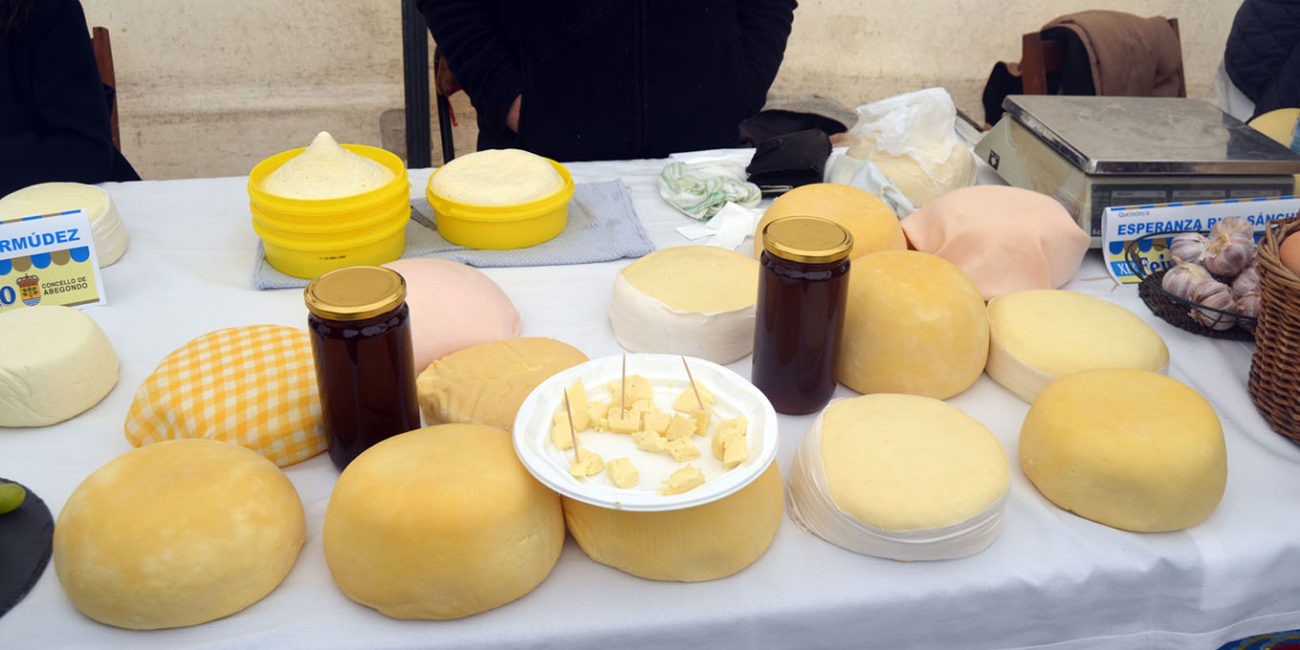A gastronomic journey along the Camino Inglés
The best food in Galicia is available along the entire route. Don't hesitate to try out the local gastronomy!
There are many excuses for a trip to Galicia, but one of the best is undoubtedly to discover and savour its food and wine. A host of traditional recipes and internationally renowned dishes, made from beef, pork, cheese, fish, seafood or fresh garden produce, and accompanied by the best wines and spirits with Denomination of Origin status – all make up the typical gastronomy of Galicia, and the traditional recipes that make these dishes so valued all over the world.
For this reason, the gastronomical experience is one of the great strengths of the the English Way. When planning any trip, it would be a travesty to neglect the gastronomy that characterises it. One of the best ways to get to know any town is by tasting a good meal, traditional and typical of the place. This also happens in the English Way to Santiago, where you will find suitable restaurants for this purpose. Get to know the gastronomy of the Camino Inglés.
Each area has its own recipe, so you can imagine how many versions of this dish you can try. But everywhere the base of these empanadas is the same: a dough made of flour that is filled with meat, fish, seafood or a variety of garden produce. You will find all sorts of empanadas filled with delicacies such as octopus, cod, tuna, zorza, peppers... put the gastronomic fillings to the test on the Camino Inglés
Typical dish par excellence of Galician gastronomy. Octopus "á feira", or Galician-style octopus, is as delicious as it is nationally and internationally renowned. Prepared following the traditional recipe, with olive oil and paprika, it is the ideal dish to share in conversation with friends or family, accompanied by a good Galician wine.
Seafood and fish are the star products of Galician gastronomy. As such, in several restaurants along the Camino Inglés you can find them on the menu, often in the form of seafood platters, broths and rice dishes in which you will enjoy the typical dishes of the area. These premium raw materials, are caught straight from the coastal municipalities along the Camino Inglés. If you never lose sight of the sea, you will be able to observe the laborious work done by the fishermen.
Internationally renowned, when you come to the town of Betanzos you can't miss the opportunity to try it. Although, at first glance, it may seem a very simple dish, the Betanzos omelette is very special as it is a sweet and slightly curdled version of the traditional recipe made with olive oil, Galician potato, salt and free-range eggs.
It is the quintessential dish of Betanzos gastronomy, which can be tasted in almost every bar and restaurant in the city.
Carral bread is an artisan product made in the traditional way, which is why it is so highly regarded. The success of this bread, characterised by its spongy crumb, lies in its production and the quality of the cereals used to bake it (which historically came from the fertile soils of the Val do Barcia, which have always produced high-quality products thanks to the river and its climate). It is shaped like a bun, known as a 'mollete' or 'bollo de moño', and is kneaded by hand with local wheat. The success of this recipe means that it is also distributed nationwide. Can you think of a better accompaniment for your meal?
Walking the English Way allows you to taste the best bread in the country. In addition to the aforementioned bread from Carral, some delicious breads are baked in Neda. A piece of this product takes us on a journey through its history, as this small town became the wheat capital of Galicia and its ovens supplied the armies of the Kings of Spain for a century.
The Neda’s famous bread can be complemented by a tour of the wheat mills, a journey through the artisan tradition of the town in a privileged natural environment.
You should always leave room for dessert... In this case, you can't end your gastronomic experience without tasting the Santiago cake, whose recipe is based on a mixture of eggs, sugar and almonds. It is recognisable by its characteristic Santiago cross drawn with icing sugar - delicious!
Proia is a traditional sweet from Pontedeume. It is made of a dough from flour, butter, yeast, sugar and aniseed. The dough is baked in the oven covered in sugar and sometimes cinnamon may also be added. Once baked, the aniseed is sprinkled over the surface and put back in the oven to gently finish off while it melts with the sugar. Proia is a sweet much sought-after by the inhabitants of the town, especially at festival times!
Costrada is a type of pie typical of the seafaring town of Pontedeume. According to tradition, the recipe for this delicacy comes from a community of Italian monks of the order of Saint Augustine and dates back to the Middle Ages.
It is a very special dish because, unlike a conventional pie, La costrada consists of several layers of meat or fish separated by a very special dough. It is most commonly made with three layers of meat (chicken, loin and ham) or fish (turbot and scallops).
The way sardines are prepared has been handed down from generation to generation until the present day. The traditional recipe indicates that this fish must be salted and then placed in the sun and finally cooked on the grill, a unique dish that will not leave you indifferent!
The municipality of Oroso is famous for its Trout Festival, which is traditionally celebrated every May. Trout is a highly recommended fish for pilgrims, as it is part of the tradition of the Camino Inglés.
The aim of the Miño flat onion fair, which is held in summer, is to promote — amongst the great variety of garden produce that exists in this area — its prize product!
As well as the famous omelette, it is undoubtedly one of the star dishes not only of the town but also of Galicia. In Betanzos a variety of cabbage is grown which is highly valued for its sweet taste. Any pilgrim on the Camino Inglés will be grateful to replenish their strength after a long day with a delicious Galician broth made with this type of cabbage which can be rarely found outside the region.
The vegetable is so famous that it even has its own song! After tasting it you will be able to sing: "Arroz con chícharos, patacas novas, repolo de Betanzos e máis cebolas...".
O Couto peppers may be less well known than those from Padrón, but they are equally delicious. They are highly valued because the peppers of this denomination aren’t hot, so you can enjoy their sweet and slightly herbaceous flavour with peace of mind! They are a must for pilgrims as they commonly found along the Camino Inglés, as they are produced in the municipalities of Narón, Ferrol, Neda and Fene.
The traditional market garden crops have always been a source of wealth in the municipality, to which organic commercial crops have now been added.
Paderne has always had a reputation for good potatoes, onions, lettuce and cabbages. Markets and shops throughout the region were supplied from this municipality, making it the garden market for all the neighbouring municipalities.
Of the organic crops, it is worth mentioning the 100% organic farming project "Orballo", whose aromatic plant species and herbal teas are internationally recognized, receiving awards worldwide, and are responsible for growing the first organic tea in Europe. They also offer guided tours of the facilities and participate in tastings of the herbal teas that are marketed there. Seitura, a vegetable and fruit farm of note, is certified by the Galician Regulatory Council for Organic Agriculture (CRAEGA). It farms animals too, including the production of artisan poultry with the Gallina de Mos breed and the return of another traditional breed such as the Celtic Porco (pig).
One of the most deeply rooted artisan products in As Mariñas are cheeses, made with traditional techniques, some of which have the Denomination ‘Arzúa – Ulloa’. Therefore, the pilgrim who wants to make an immersion in the totality of the gastronomy of the Camino Inglés should not forget about this product. Remember to leave room in the backpack to carry your cheese! In municipalities such as Abegondo, Paderne, Mesía or Ordes you can find different cheese factories.
The turnip greens in Ordes and the women who sell them by the roadside are typical of this area. The Town Council of Ordes usually offers a tasting at the festival held in March, although it is possible to find this typical delicacy at other times of the year and in different places along the Camino Inglés. If this route teaches us anything at all, it is to share and enjoy!
Grilled meats have an identity of their own in Galicia. It is possible to enjoy this popular dish, usually consisting of the best pork and beef ribs, and some chorizo sausages. Preparing this food is an art and in the town council of Narón they celebrate the gastronomic festival of the churrasco in August, but it is possible to enjoy it all year round along the Camino.
On Sundays it is very typical to enjoy a good tripe casserole. This dish made with chickpeas and meat, is an ideal source of energy and should be accompanied by a local wine. However, don’t fret if it’s not a Sunday as you’re bound to come across them any day of the week in restaurants and bars serving traditional cuisine. Just remember to mop up all the sauce with a nice piece of bread!
Honey has been a popular ingredient in the kitchen for centuries and has many health benefits. Accompanying the premium local products with the best honey can be a supreme option. Take a jar of the best Galician honey to give your palate a taste it won’t forget!
To refer to the after-dinner meals in the lands of Pontedeume, melindres and almendrados are key products in the celebration of popular festivities. Undoubtedly, a temptation for the sweetest of the senses when passing through the Camino Inglés.
This is a sponge cake in which the main ingredient is almonds. It is very characteristic and has a clever hole in the centre, ensuring that it is just right on the inside, as the almonds take a long time to bake.
As referenced in the book "La cocina Práctica", by Picadillo in 1916, this delicacy is made with egg yolk, sugar and almonds, and with the town's coat of arms on the top.
Throughout the Camino area there are numerous dairy farms. Among them is the Casa Grande de Xanceda (Mesía), which produces organic yoghurt from its cow milk. In the 1960s they began a project of organic farming without chemical products in the treatment of dairy products. Over the years, the project has grown and today it is a benchmark in the region in terms of responsible processing and production. Their top-quality yoghurts are the flavour that accompanies their whole agritourism experience and a variety of other dairy products, they even make milk-based beer!
Although these are some of the typical dishes that you will taste if you decide to do this itinerary, part of the gastronomy of this route is also made up of other products. The gastronomic experience of the Camino Inglés must be accompanied by the best wines of the area. These are very well-known because Galicia boasts five denominations of origin. We also recommend the curious experience of drinking wine in a cup, a small ceramic vessel typical of Galician taverns.
Liqueurs are also typical of this region. As well as the famous queimada, we recommend you try (…in moderation!) the cherry liqueur, made with firewater, sugar, cinnamon (or vanilla) and coffee liqueur, with its Aguardiente de Galicia Geographical Denomination of Origin. Also in this category is the liqueur de hierbas, another typical spirit of this autonomous region, which allows you to savour the essence of Galicia…


